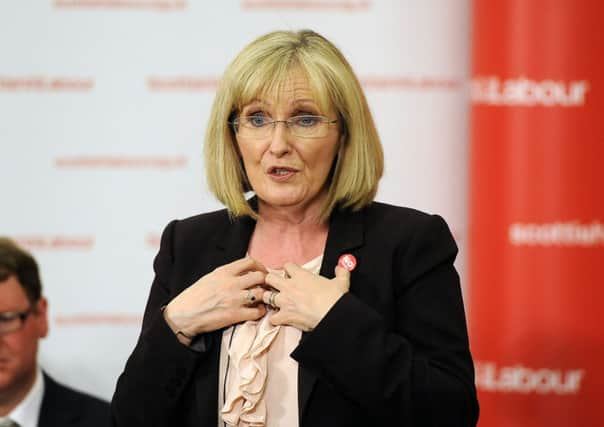Leaders: Margaret Curran fires the first shots


Recent opinion polls suggest that the SNP leads Labour by more than 20 percentage points, a reversal of the last election, when Labour led over the SNP by the same margin.
This is the background to today’s call by Margaret Curran, shadow Scottish secretary, that Scots should vote Labour if they want a Labour government, as that (although she does not quite put it this way) is the best way to fulfil the wish of SNP leader Nicola Sturgeon that there should be a Labour government.
Advertisement
Hide AdAdvertisement
Hide AdIn the opening volleys of what will be an absolutely fascinating campaign, Ms Curran has grabbed an opportunity presented to her by Ms Sturgeon. In the last general election, Alex Salmond maintained that he would seek the best deal for Scotland from whichever party was prepared to offer it and needed help forming a majority.
This time, Ms Sturgeon has said she will only deal with Labour. She has done so to avoid damaging what appears to be a highly profitable SNP theme – that Labour’s partnering with the Conservatives in the referendum was offensive to many Labour voters.
But in so doing, she has exposed a weakness in her argument. If she does indeed prefer a Labour government, and Scottish voters want that too, why on earth should the electorate vote for any party other than Labour?
It doesn’t take much computing power to work out that as Labour won 41 of Scotland’s 59 Westminster seats in 2010, holding on to those seats will beessential if Ed Miliband is to become prime minister. Labour’s campaign theme will therefore be “go to bed with Nicola, wake up to Dave.”
Ms Sturgeon may choose to argue that if they are instead won by the SNP, the Nationalists will support Labour, so Mr Miliband can still be prime minister. But any popularity which did propel Mr Miliband to power may well evaporate in England if he was dependent on Scottish Nationalist MPs’ votes.
On what basis could SNP MPs vote to support Labour changes in English education, health, criminal justice and other domestic policies? Ms Sturgeon might contemplate her MPs doing so if Mr Miliband was prepared to increase the amount of power to be devolved from Westminster to Holyrood.
The danger is that some English voters may think they were being held to ransom in a warping of the democratic process that was tantamount to completely corrupting it.
What might emerge from the furore around such circumstances is hard to foresee at this stage. One reading is that the English electorate may well be so incensed as to make sure that Mr Miliband was the last Labour occupant of Downing Street for a very long time.
This will be an election with very high stakes.
No repeat of trams fiasco
Advertisement
Hide AdAdvertisement
Hide AdCourageous might be the best word to describe Edinburgh council’s intention to draw up a business case for reviving plans to extend the city’s tram line from the centre to Leith. Courageous, because, while the word usually means brave, in bureaucratic circles, it can mean foolhardy.
The original tramline rationale was that tens of thousands of homes were going to be built on the Leith/Granton waterfront, but all the jobs growth was going to be on the west side of the city. A tramline between the two points was the best way to prevent transport gridlock in the centre. Recession meant neither the jobs nor the houses have appeared. Moreover, much of the waterfront is being re-zoned for industrial use. This strongly suggests prospects for the north of the capital do not remotely approach the kind of boom-town growth that prompted the tram.
So, even if city planners are right to argue that now is the time to prepare for future population and jobs growth, it isn’t necessarily the case that a tram route down Leith Walk is the best transport investment to make.
If, however, the developers of the massive St James Centre scheme are prepared to make a substantial contribution, that may tip the balance in favour of the Leith extension. But residents and businesses along the route, who suffered greatly from the abortive works, need to be consulted and have their views respected.
While the existing tram route seems well used and is now an accepted part of the city’s infrastructure, the city council will need to show in depth that the lessons on how to avoid a repeat of the construction fiasco have been well and truly learned.